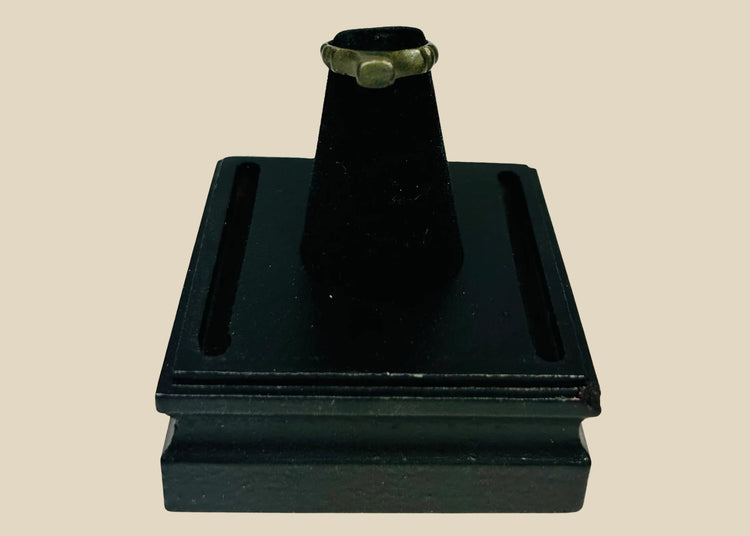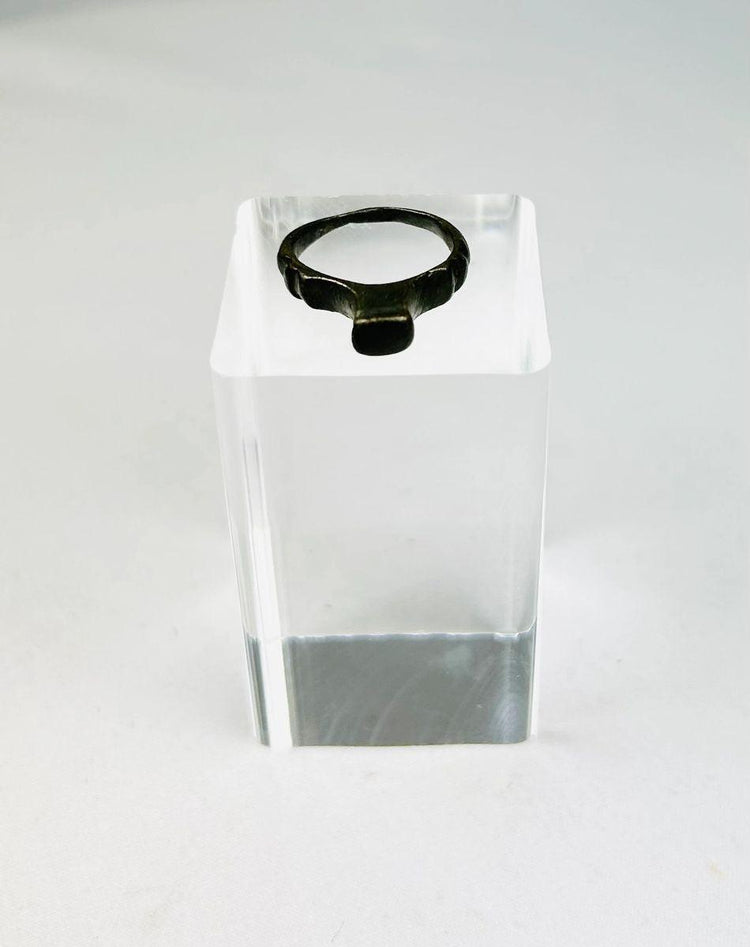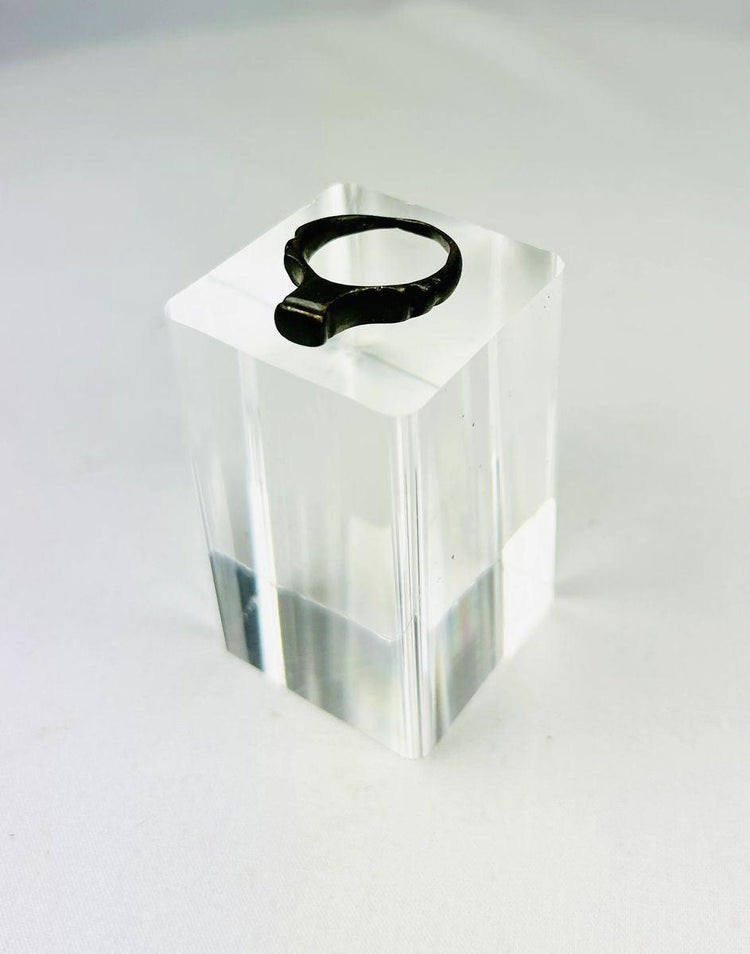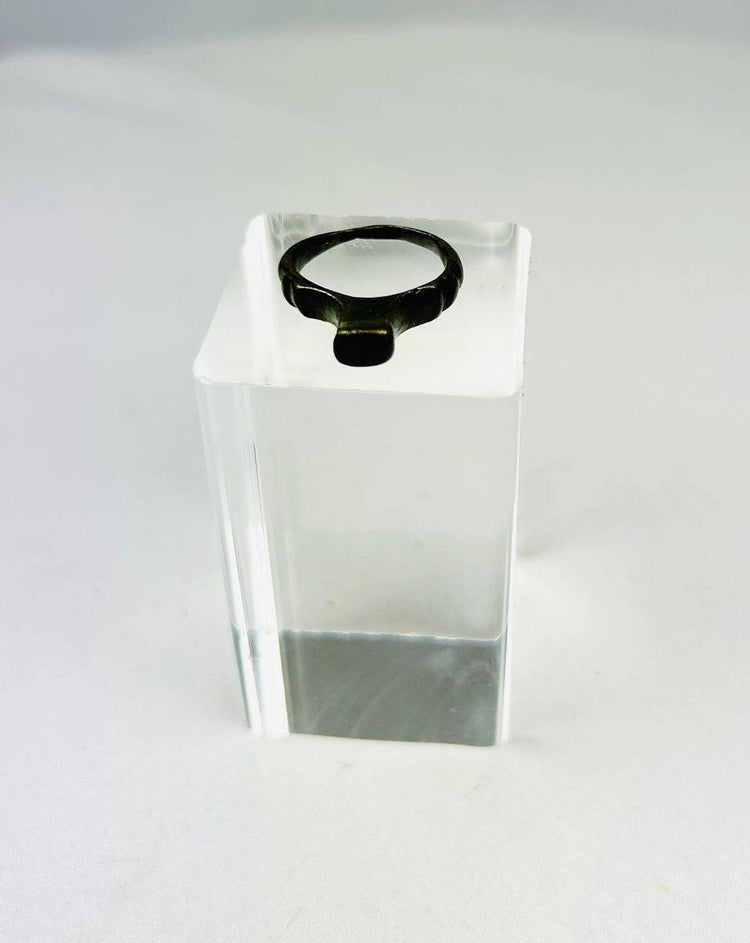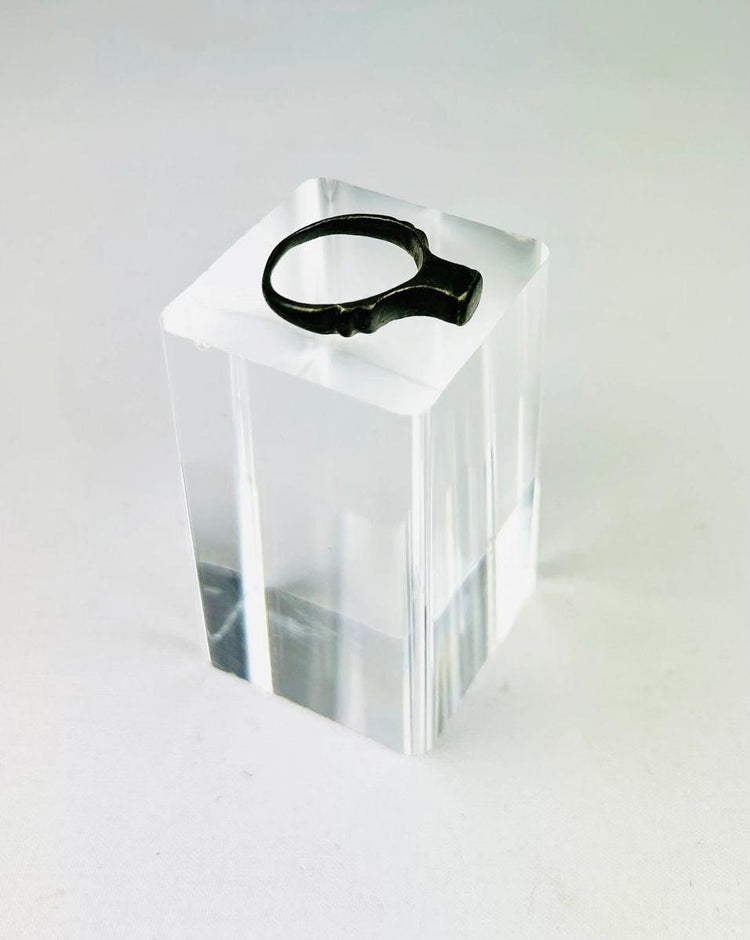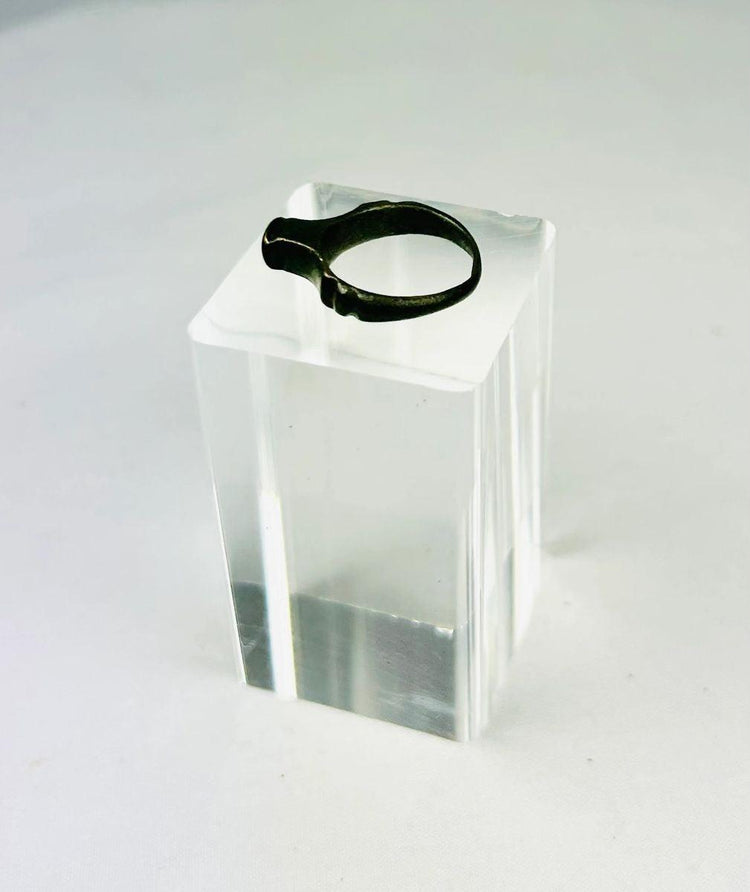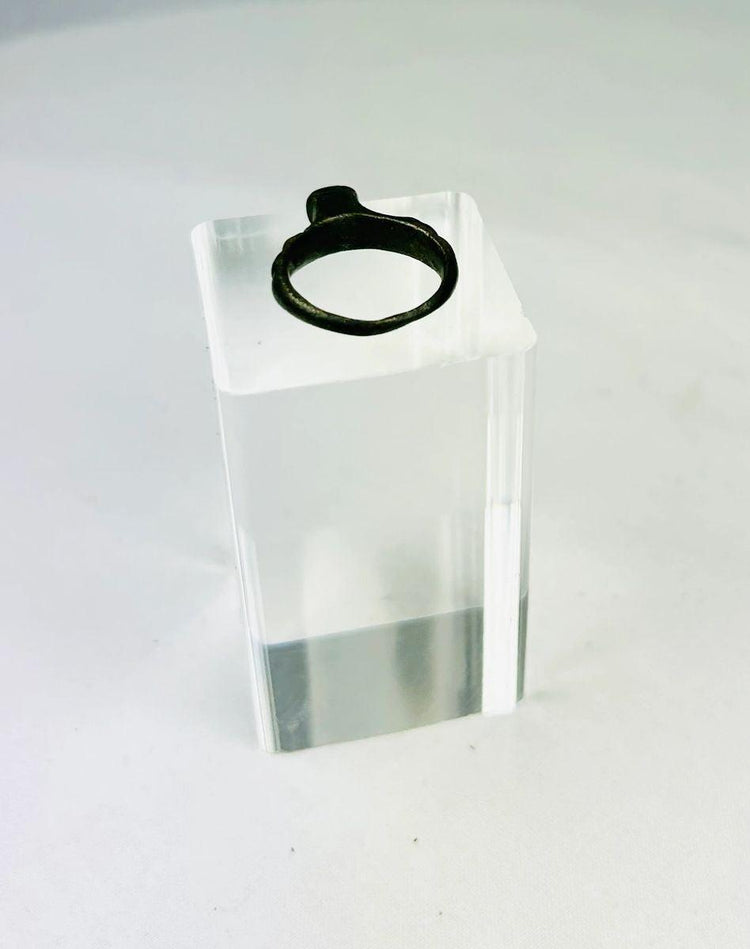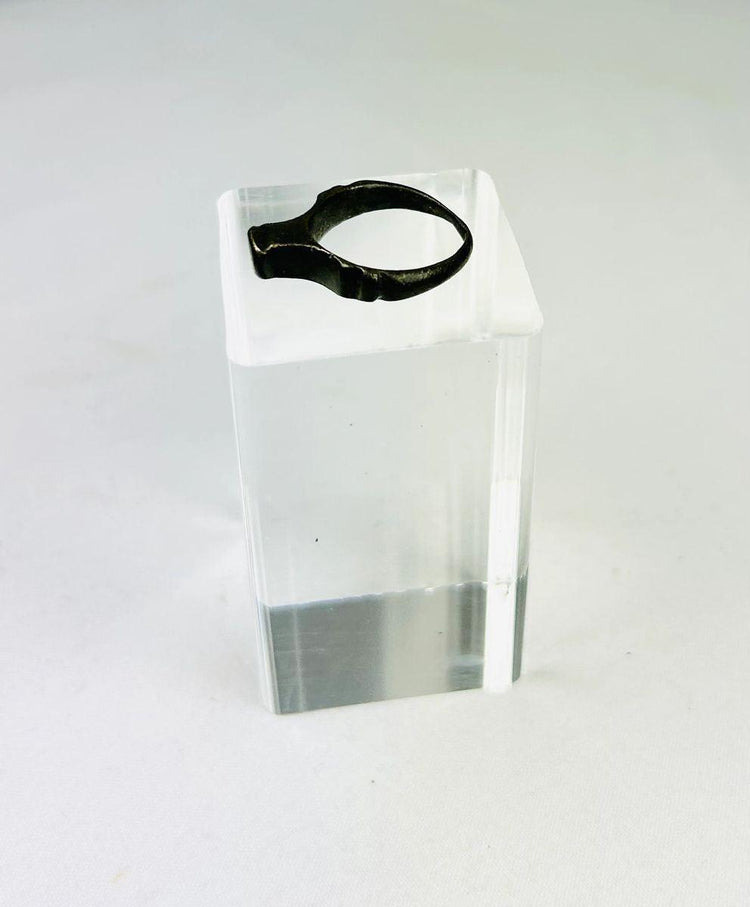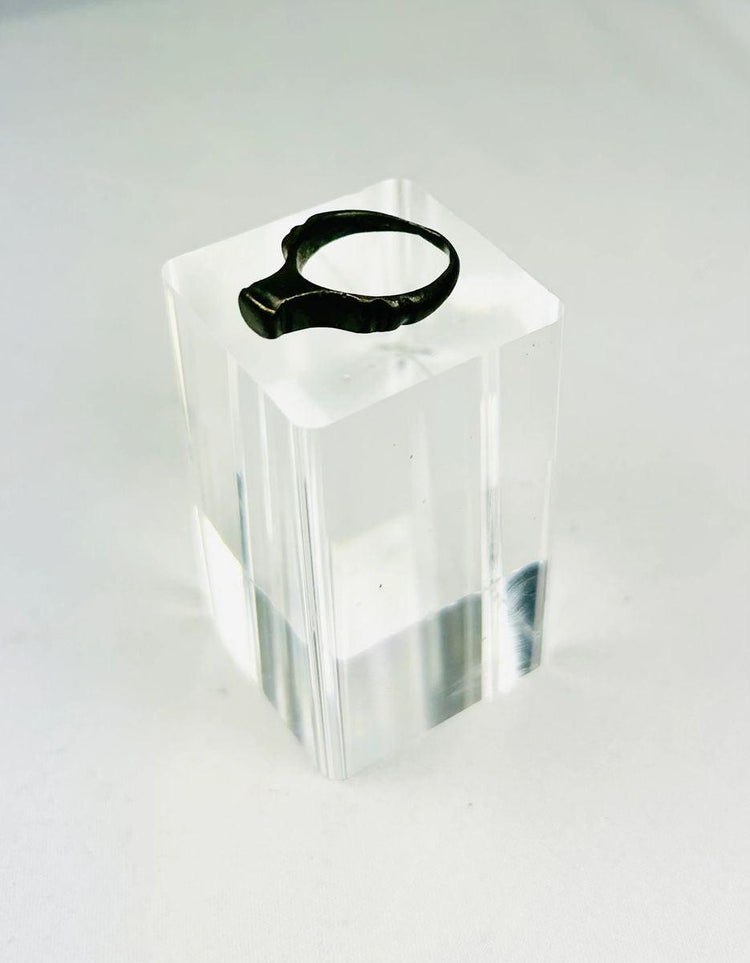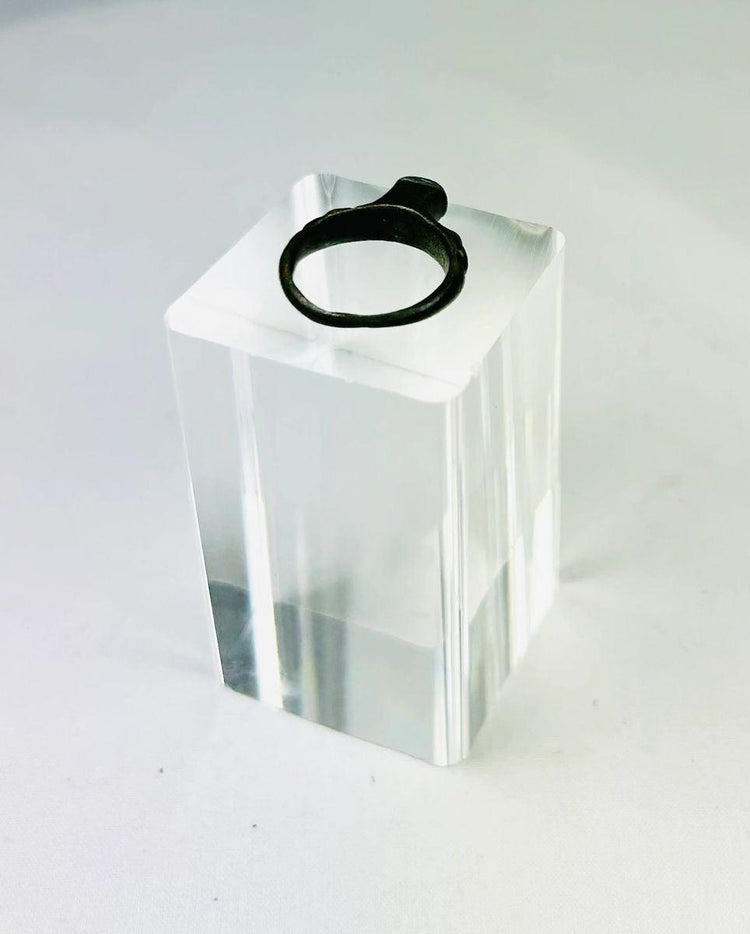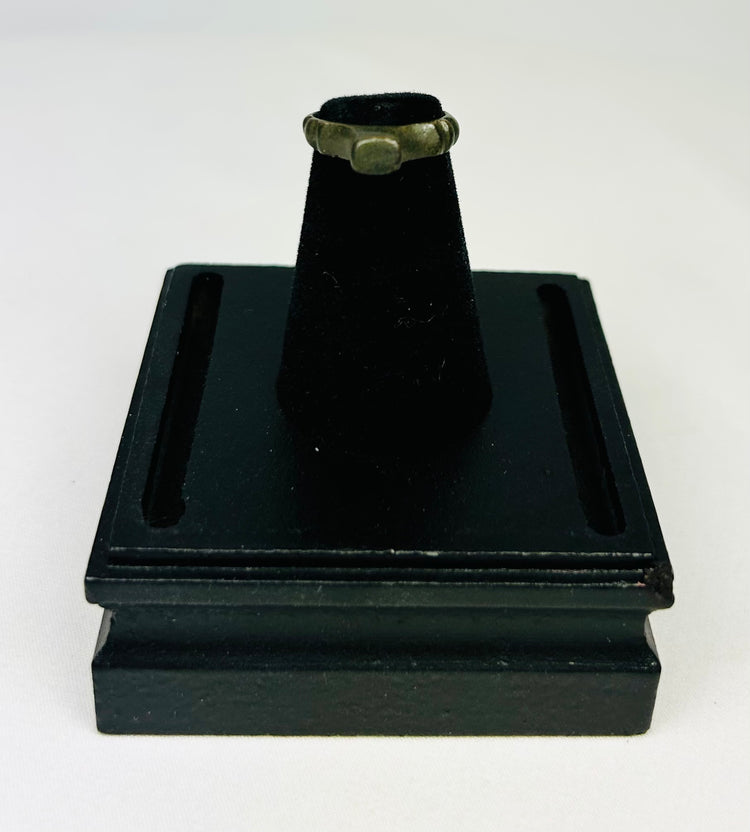Romain impérial | Bague en bronze à chaton plat | Vers le IIe-IIIe siècle apr. J.-C.
Description
Plus
Moins
Contexte historique et origine
Région : Empire romain impérial
Matériau : Bronze
Période : Période impériale romaine, vers 100-300 CE
Description
Cette chevalière en bronze finement coulé est un authentique exemple de parure personnelle et d'autorité dans l'Empire romain. Elle présente un anneau arrondi avec un chaton plat et légèrement surélevé, autrefois gravé d'un motif en creux utilisé pour marquer les sceaux sur la cire ou l'argile. Si des siècles d'usure ont rendu le chaton lisse, la pièce conserve sa forme architecturale affirmée et sa belle patine noir-vert, fruit d'un long enterrement. Probablement portée par un citoyen ou un soldat romain, cette chevalière incarne à la fois élégance et fonctionnalité, alliant joaillerie et identité sociale.
Caractéristiques
- Authentique bronze romain coulé à la main
- Lunette large et plate typique des chevalières romaines
- Patine vert-noir profond avec de légères incrustations terreuses
- Forme minimaliste, non restaurée et telle que trouvée
Importance culturelle
Dans la société romaine, les chevalières servaient à la fois d'identifiants personnels et d'outils fonctionnels pour sceller la correspondance et les documents juridiques. Portées quotidiennement et souvent transmises de génération en génération, ces bagues représentaient l'autorité, la lignée familiale et le rang social. Cet exemplaire, bien que porté, demeure un lien tangible et intime avec la vie d'un individu dans l'Empire romain.
Condition
Bon état ancien, présentant des traces d'usure et d'oxydation. La lunette est lisse et usée, probablement due à des siècles d'utilisation et d'enfouissement. Aucune réparation ni restauration récente.
Dimensions (approximatives)
Taille de la bague : US 3
Âge
Estimé entre 1 700 et 1 900 ans (période impériale romaine, vers 100-300 apr. J.-C.)
Description
Contexte historique et origine
Région : Empire romain impérial
Matériau : Bronze
Période : Période impériale romaine, vers 100-300 CE
Description
Cette chevalière en bronze finement coulé est un authentique exemple de parure personnelle et d'autorité dans l'Empire romain. Elle présente un anneau arrondi avec un chaton plat et légèrement surélevé, autrefois gravé d'un motif en creux utilisé pour marquer les sceaux sur la cire ou l'argile. Si des siècles d'usure ont rendu le chaton lisse, la pièce conserve sa forme architecturale affirmée et sa belle patine noir-vert, fruit d'un long enterrement. Probablement portée par un citoyen ou un soldat romain, cette chevalière incarne à la fois élégance et fonctionnalité, alliant joaillerie et identité sociale.
Caractéristiques
- Authentique bronze romain coulé à la main
- Lunette large et plate typique des chevalières romaines
- Patine vert-noir profond avec de légères incrustations terreuses
- Forme minimaliste, non restaurée et telle que trouvée
Importance culturelle
Dans la société romaine, les chevalières servaient à la fois d'identifiants personnels et d'outils fonctionnels pour sceller la correspondance et les documents juridiques. Portées quotidiennement et souvent transmises de génération en génération, ces bagues représentaient l'autorité, la lignée familiale et le rang social. Cet exemplaire, bien que porté, demeure un lien tangible et intime avec la vie d'un individu dans l'Empire romain.
Condition
Bon état ancien, présentant des traces d'usure et d'oxydation. La lunette est lisse et usée, probablement due à des siècles d'utilisation et d'enfouissement. Aucune réparation ni restauration récente.
Dimensions (approximatives)
Taille de la bague : US 3
Âge
Estimé entre 1 700 et 1 900 ans (période impériale romaine, vers 100-300 apr. J.-C.)
Vous aimerez peut-être aussi




























